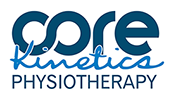Trigger point release may sound too good to be true, but for millions of people around the world suffering from myofascial pain, it is a vital form of treatment. Trigger point release is not a miracle cure, rather it is a treatment that relies on long term research and experience, and is administered by trained professionals.
What is myofascial pain?
Myofascial refers to the connective tissue beneath the skin that contains, connects and stabilizes muscles. According to the Mayo Clinic “Myofascial pain syndrome is a chronic pain disorder. In myofascial pain syndrome, pressure on sensitive points in your muscles (trigger points) causes pain in seemingly unrelated parts of your body. This is called referred pain.”
There are often common, identifiable patterns of referred pain. According to the National Association of Myofascial Trigger Point Therapists, “when the muscle at the top of your shoulder (trapezius) has a trigger point it will refer pain up the side of your neck and head causing a headache. Active myofascial trigger points in the muscles of the shoulder neck and face are a common source of headaches.”
Typically, myofascial pain results from the repeated and repetitive overuse of muscles at work, from sports, or even as a result of stress. Virtually everyone has experienced some sort of pain caused by overuse, but what makes myofascial pain unique is that it does not respond to traditional treatment, and can even worsen over time.
What is trigger point release?
Trigger point release is a treatment that targets the trigger points that are causing the referred pain. Treating individual trigger points is a relatively straightforward process, but ensuring that the pain does not reoccur, or return in a different location is much more difficult.
Trigger points are formed when muscles grow tight into ‘knots’ due to constant tension. Trigger point therapy uses pressure applied either manually or through dry-needling, physiotherapy, massage, heat, or a combination. Doctors may also choose to prescribe medication, including pain relievers, sedatives and anti-depressants (which can help alleviate pain). However, the long-term effectiveness of prescription drugs is debateable and can lead to dependency.
Dry needling
Dry needling is a particularly effective treatment for myofascial pain. It is called ‘dry’ needling because, as the name suggests, nothing is injected into the patient. Instead it is simply the effect of the needle itself which helps release the trigger point. Although it closely resembles acupuncture, it is rooted in modern science, rather than ancient traditions. Dry needling is a safe and sterile treatment option, performed by trained professionals.
When combined with other forms of treatment, including massage and physiotherapy, dry needling not only helps treat short term pain, it also prevents it from recurring.
If you are suffering from myofascial pain, you may be struggling to find a treatment option that works best for you. Because myofascial pain does not appear on X-Rays, MRIs or other diagnostic tests, you may even struggle to find acceptance. Contact Meadowlands Physiotherapy today to discuss how trigger point release treatments can improve your myofascial pain.
